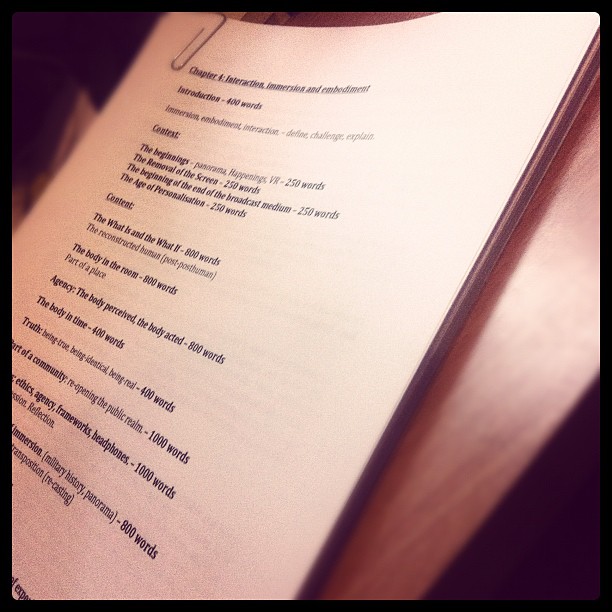For those limited number of people interested in this kind of thing, pleased to announce I’ve had the following paper (and accompanying playful experience) accepted in a conference/symposium called “Performing the Monstrous in the City” at QMU in September. Interestingly they seem to have invited 2.8 Hours Later lot to feature, too, which is interesting. Not least because I think they actually offer a pretty poor experience (at least in terms of what they promise; i.e. a gaming/interactive experience, which it mostly isn’t. Read a bit on what I think interaction is over here. It’s definitely not ‘hot’ interaction in those terms, and extremely linear and much closer to film than games or performance. What it is extremely interesting as is an exercise in pre-marketing. Anyway, this is a LONG bracket. Stopping now)
What I shall be talking about:
Playing with the monstrous; restructuring the ‘other’ through loveliness, adventure, and curiosity.
The city makes us all monsters; it channels us and distracts us, and fills our lives and heads with monstrous noise. It casts all others as potential monsters; it provides no ‘safe place’ or ‘home’. As media, message and surveillance culture become more pervasive, new tactics of resistance are required. Games and play are a growing and powerful route to reconstructing the monstrous on and of our streets.
This paper will consider the playful practices of the Agency of Coney, looking at the power of first-person performative experience in breaking down the monstrous of the city, and the ‘other’. The paper will use the lens of Coney’s three main principles of ‘making good play’; adventure, curiosity, and loveliness; and look at the Agency, it’s training, and activity, to consider new strategies for re-connecting individuals with the monstrous other – in the people and the city space they move through every day.
A 20 minute paper with accompanying playful experience.
The playful experience will be a practical example of the application of playfulness, delivered as small adventurous, curious and lovely tasks that can be discovered and completed by anybody at the conference, at any time during the day.


